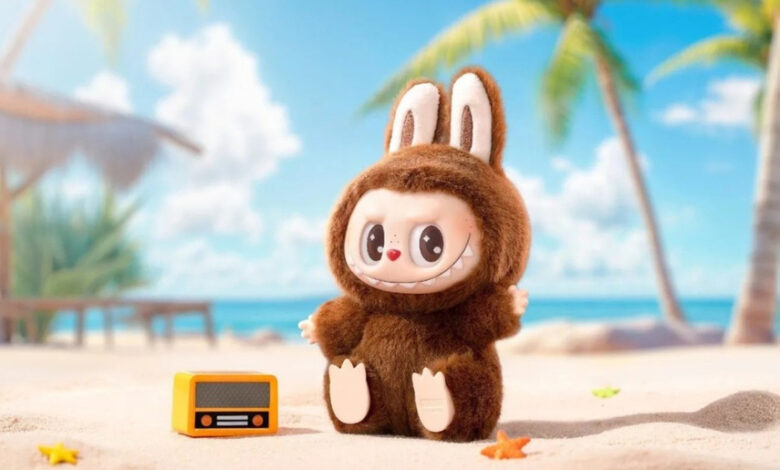
Have you heard of Labubu?
This odd-looking toy has become a global phenomenon. What began as a quirky character in a storybook has now evolved into a high-demand collectible, helping its parent company generate over $400 million in revenue in 2024 alone.
But how did a small vinyl figure transform into a luxury collector’s item worth lakhs of rupees? Let’s explore the brilliant business strategy behind Labubu and how it became one of the most successful examples of scarcity-driven marketing.
What is Labubu?
Labubu is a fictional character from The Monsters, a picture book series by Dutch-Hong Kong illustrator Kasing Lung. The character has long bunny-like ears, a mischievous smile, and a slightly eerie but lovable look. In the story, Labubu is a kind-hearted creature who often causes unintentional chaos.
Chinese collectibles company Pop Mart turned Labubu into a toy, and the rest is history. The character has since gained massive popularity, especially in Asia, Europe, and among collector communities across the world.
The Blind Box Concept: How Mystery Drives Demand
Unlike traditional toys, Labubu figures are sold in “blind boxes.” Buyers have no idea which version they’re getting until they open the box. This element of surprise makes each purchase feel like a game of chance.
Each series typically includes:
- Multiple standard designs
- One or two rare “secret editions”
- A low probability (as rare as 1 in 72) of getting the secret version
This system encourages repeat purchases. People often buy multiple boxes just to complete their collection or chase rare editions.
How Much Does a Labubu Toy Cost?
If you’re purchasing from Pop Mart directly:
- Vinyl figures start at around $15
- Plush keychains are priced between $20 and $30
- Limited-edition large figures can cost upwards of $900
In the resale market, however, prices increase dramatically. A four-foot Labubu was sold for $170,000 in June 2025, and a five-foot version was sold for $130,000 at an art show. These toys are no longer just playthings; they are investments and art collectibles.
Pop Mart’s Billion-Dollar Growth
Pop Mart has seen exceptional growth over the past five years. Here’s a quick snapshot:
| Year | Total Revenue | Labubu Revenue |
| 2019 | ~$250 million | — |
| 2024 | $1.8 billion | $423 million |
Labubu alone grew by 729% from 2023 to 2024, playing a key role in Pop Mart’s revenue jump. The company’s stock has also risen sharply nearly 600% since listing on the Hong Kong Stock Exchange in 2020.
Why This Marketing Strategy Works: The Psychology of Scarcity
Pop Mart’s success with Labubu is not accidental. It is built on a deep understanding of consumer psychology, particularly around scarcity and exclusivity.
1. Surprise Builds Curiosity
Blind boxes make every purchase an experience. The possibility of discovering a rare edition creates excitement.
2. Scarcity Builds Urgency
Rare toys sell out quickly. This makes people feel like they’ll miss out if they don’t act fast.
3. Community and Buzz Build Desire
Influencers, celebrities, and unboxing videos help spread the word. Blackpink’s Lisa, among others, has helped create social media hype around Labubu drops.
4. Resale Value Builds Investment Appeal
Labubu isn’t just a toy anymore. It’s become a status symbol in some circles, with certain figures being treated like art or assets.
Labubu Isn’t Alone: Scarcity-Based Marketing in Action
Liquid Death
A water brand that used edgy content and limited editions to create FOMO. Sales jumped from $2.8 million in 2019 to $130 million in 2022.
Prime Hydration
Started by influencers Logan Paul and KSI, Prime drinks were sold in limited quantities and resold at much higher prices. It generated $250 million in its first year.
OnePlus
The smartphone brand started with an invite-only model, creating a sense of exclusivity. Their first model sold over 1.5 million units in one year with minimal advertising.
The Risks: When Scarcity Becomes Manipulation
While scarcity can drive growth, misuse of the tactic can damage brand trust.
Examples of manipulative practices include:
- Fake low stock messages
- Countdown timers that reset indefinitely
- Claims of urgency without basis
According to a HubSpot survey, 60% of consumers make purchases due to fear of missing out. However, 59% of customers stop purchasing from a brand after multiple bad experiences, and 17% leave after just one. Consumers want transparency, not trickery.
Final Thoughts
Labubu is more than just a collectible, it’s a masterclass in modern marketing.
However, the line between smart marketing and consumer manipulation is thin. As brands continue to experiment with scarcity, trust must remain at the centre of the strategy.
Done right, scarcity marketing can create excitement, community, and loyalty. But done wrong, it can lead to buyer’s remorse and broken relationships.
Summary Table
| Feature | Details |
| Brand | Pop Mart |
| Character Origin | “The Monsters” by Kasing Lung |
| Toy Type | Blind Box Collectibles |
| Starting Price | $15 |
| Highest Resale Price | $170,000 |
| 2024 Revenue (Labubu) | $423 million |
| Sales Model | Mystery, Scarcity, Limited Editions |
| Key Marketing Channels | Influencers, Pop-ups, Vending Machines |
Disclaimer: This blog is for informational purposes only and should not be considered as investment advice.
By- Rinal Rathi




